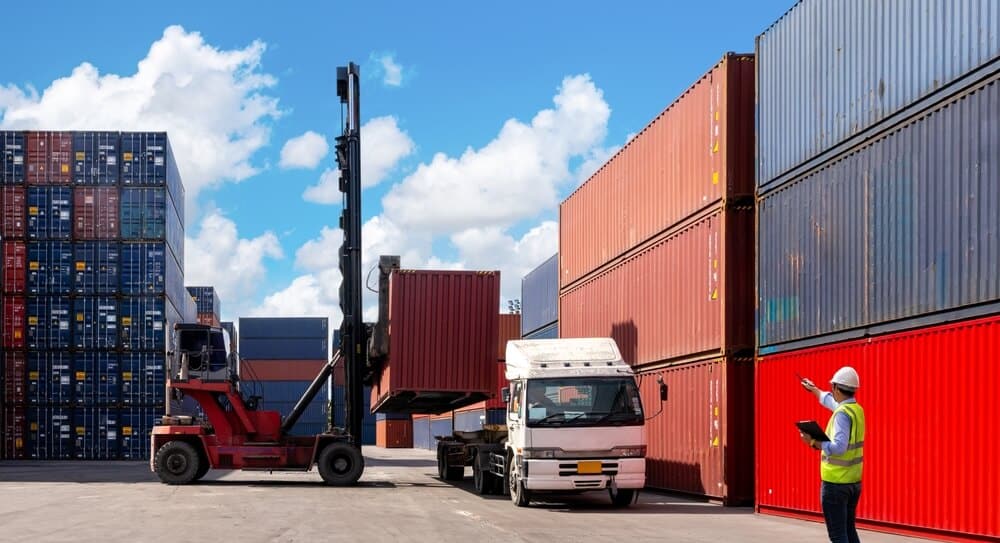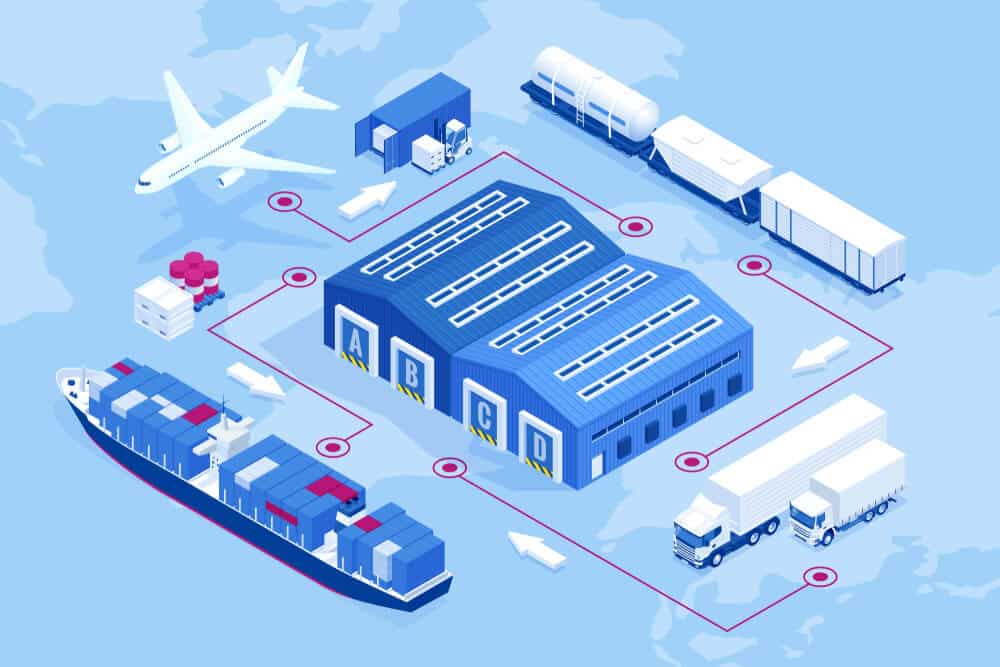Supply chain transformation is a critical process for optimizing operations and enhancing competitiveness in modern businesses. This article explores the importance, benefits, and effective implementation strategies of supply chain transformation.
Key Takeaways
- Supply chain transformation is vital for optimizing operations and enhancing customer service, requiring alignment with strategic business goals and investment in new technologies.
- Key objectives of supply chain transformation include improving efficiency, reducing costs, enhancing visibility, and fostering a culture of continuous improvement through robust data analytics.
- Successful transformations are driven by clear goals, effective leadership, and the adoption of advanced technologies like AI, IoT, and blockchain, which enhance performance and adaptability in a rapidly changing market.
Also Read
- 6 Supply Chain Strategies You Need to Know
- How to Optimize Your Supply Chain Efficiency
- How to Bring Your Ecommerce Supply Chain To Live?
Understanding Supply Chain Transformation
Supply chain transformation is a comprehensive process that involves reimagining existing supply chain processes and technologies to better align with a company’s strategic business goals. It aims to optimize operations to meet business needs, ensuring efficient delivery and prompt customer service. Modern supply chain transformation efforts focus on creating robust, transparent supply chains that can swiftly adapt to market changes.
Key aspects of supply chain transformation include:
- Aligning supply chain strategies with overall business objectives
- Leveraging advanced data analytics and automation for better insights and streamlined operations
- Implementing new supply chain management systems to foster stronger supplier relationships and more integrated operations
- Addressing operational issues to improve efficiency and lead to rapid financial savings
The need for supply chain transformation is driven by several factors:
- Increasing consumer demands reshaping supply chain standards
- The necessity for resilience and agility to withstand disruptions
- Competitive pressure, as other businesses are also evolving their supply chains
- High demand for cost-saving and value-adding skills among supply chain professionals
Effective supply chain transformation requires both top-down direction and bottom-up support to overcome resistance and engage staff in the initiative.

Key Goals of Supply Chain Transformation
The primary goals of supply chain transformation include:
1. Improved Efficiency
Operational efficiency is key to successful supply chain transformation. Strategies to improve efficiency include:
- Streamlining processes through automation
- Centralizing decision-making
- Reducing manual workloads
- Implementing integrated supply chain management systems
- Adopting a continuous improvement approach to reduce waste and enhance productivity
2. Cost Reduction
Cost reduction is critical for companies transforming their supply chains as it directly impacts profitability. Strategies for cost reduction include:
- Adopting automated processes
- Transforming inventory management practices
- Leveraging AI for enhanced demand forecasting
- Optimizing supply chain operations to lower expenses and enhance market competitiveness
3. Enhanced Visibility
Achieving transparency in supply chains helps companies respond more effectively to unexpected disruptions. Enhanced visibility involves:
- Improving internal and external transparency
- Enhancing data access and centralizing decision-making
- Leveraging data-driven insights to inform cost-reduction strategies and optimize operations
- Investing in new technologies for improved operational efficiency
4. Improved Customer Experience
Enhancing customer experience is a crucial goal of supply chain transformation. This can be achieved through:
- Ensuring product availability
- Improving delivery speed and reliability
- Offering competitive pricing
- Providing better product assortment
The Supply Chain Transformation Process
The supply chain transformation process involves several key stages:
1. Defining Scope and Objectives
- Clearly identify primary business goals and corresponding supply chain objectives
- Align objectives with the overall business strategy
- Develop a clear and quantifiable long-term vision
- Define KPIs to measure the impact of changes
2. Assessing Current State
- Analyze current sales and inventory data to identify improvement areas
- Integrate supply chain planning systems with existing IT infrastructure
- Establish clear goals and metrics for measuring the impact of continuous improvement initiatives
- Assess current operations, identify problems, and map strategies
3. Developing a Roadmap
- Create a detailed roadmap to organize the transformation journey
- Ensure long-term coherence in efforts
- Plan for system integration and ongoing training during implementation
- Adopt a structured approach to projects for successful implementation
Popular Technologies in Supply Chain Transformation
Several key technologies are driving supply chain transformation:
1. Artificial Intelligence (AI)
AI enhances efficiency and resilience in supply chains by:
- Optimizing various supply chain activities, such as monitoring product quality and forecasting customer demand
- Analyzing large datasets rapidly to improve efficiency and reduce costs
- Identifying quality control issues and potential delays
- Improving warehouse efficiency by optimizing layouts and workflows
- Optimizing transport routes and reducing wastage, contributing to environmental sustainability

2. Internet of Things (IoT)
IoT technologies contribute to supply chain transformation by:
- Enabling continuous monitoring of assets and products for real-time visibility
- Facilitating seamless communication and data sharing among stakeholders
- Enhancing inventory management and efficiency
- Creating more connected and responsive supply chains when integrated with other digital technologies
3. Blockchain
Blockchain technology enhances supply chain operations by:
- Creating an immutable transaction record, boosting accountability and traceability
- Facilitating secure, verifiable tracking of goods
- Improving transparency and trust in supply chain transactions
- Reducing fraud risk and enhancing supply chain resilience
Overcoming Challenges in Supply Chain Transformation
Companies face several challenges during supply chain transformation:
1. Resistance to Change
To overcome resistance to change:
- Implement strong leadership with both top-down direction and bottom-up support
- Engage staff to ensure buy-in and foster a culture of continuous improvement
- Celebrate successes and acknowledge contributions
2. Data Integration
Effective data integration involves:
- Integrating supply chain planning systems with existing IT infrastructure
- Cleansing and organizing historical supply and sales data
- Ensuring clean data and proper integration for analytics
- Recognizing that output data quality depends on input data quality

3. Implementation Hurdles
To address implementation challenges:
- Establish well-structured project management
- Commit to transformation efforts, especially in fast-growing companies
- Develop effective super-users to implement solutions efficiently
- Establish a clear timetable for implementation
- Plan for integration with core systems, data cleansing, ongoing training, and system testing
Case Studies: Successful Supply Chain Transformations
Several companies have successfully implemented supply chain transformations:
- Sunsweet Growers: Enhanced forecasting accuracy by 15-20% and reduced production overtime from 25% to 8% through advanced planning technology.
- Deere & Company: Implemented a supply chain redesign that led to a $1 billion reduction in inventory and improved delivery times from ten days to five or fewer.
- Intel: Reduced order cycle time for the Atom chip from nine weeks to two by adopting a make-to-order strategy.
- Starbucks: Saved over $500 million by reorganizing its supply chain and reducing reliance on less effective third-party logistics providers.
- AGCO: Improved efficiency by implementing a globally integrated transport management system, reducing freight costs by 18%.
These case studies highlight the importance of adopting advanced technologies, aligning strategies with business goals, and focusing on process integration for successful transformations.
Choosing the Right Supply Chain System
Selecting an appropriate supply chain management system is crucial for successful transformation. Considerations include:
1. In-house Development vs. Specialist Providers
- In-house systems allow for direct control and close tailoring to company practices but can be resource-intensive.
- Third-party providers often minimize potential risks and offer predictable performance backed by specialized expertise.
2. Evaluating System Capabilities
- Assess how well the system can be tailored to match specific operational goals.
- Review past implementations to understand effectiveness and vendor adaptability.
- Ensure the chosen system meets unique business requirements and supports long-term strategic objectives.
Importance of Continuous Improvement
Continuous improvement is essential for maintaining the benefits achieved through supply chain transformation:
- Regularly monitor KPIs and track staff hours to assess progress and identify areas for improvement.
- Provide ongoing employee training to successfully implement new systems and processes.
- Recognize that a well-functioning logistics system is essential for overcoming market challenges and driving profitable growth.
- Understand that transformation initiatives lead to significant benefits such as end-to-end visibility and collaboration, driving overall business value.

Global Supply Chain Optimization
Supply chain transformation is a vital process for modern businesses aiming to stay competitive and meet evolving consumer demands. By optimizing supply chain operations, reducing costs, enhancing visibility, and leveraging advanced technologies, companies can achieve significant improvements in efficiency, performance, and customer satisfaction.
Continuous improvement and strategic planning are essential for sustaining these benefits and driving long-term success. As demonstrated through various case studies, a well-executed supply chain transformation can lead to substantial cost savings, improved delivery times, and enhanced overall business performance.
Frequently Asked Questions
What is the main objective of supply chain transformation?
The main objective of supply chain transformation is to optimize operations to meet business needs, ensuring efficient supply of goods and a rapid response to customer demands.
How can AI improve supply chain processes?
AI enhances supply chain processes by optimizing product quality monitoring, improving customer demand forecasting, and automating documentation, ultimately driving greater efficiency and cost savings.
What are some common challenges in supply chain transformation?
Supply chain transformation often faces challenges such as coordinating multiple teams, managing digital demands, overcoming resistance to change, integrating data effectively, and navigating implementation hurdles. Addressing these challenges is crucial for successful transformation.
Why is continuous improvement important in supply chain transformation?
Continuous improvement is crucial in supply chain transformation as it helps maintain efficiency gains and adapt to evolving market conditions. This ongoing process ensures that businesses can sustain their competitive edge and respond effectively to challenges.
How do companies choose the right supply chain management system?
To choose the right supply chain management system, companies must assess their unique business needs and operational goals, ensuring alignment with their strategic objectives for sustained success.
Transform Your Supply Chain with Gembah’s Expertise
Ready to revolutionize your supply chain and stay ahead in today’s competitive market? Gembah’s network of experts can guide you through every step of your supply chain transformation journey. From defining clear objectives to implementing cutting-edge technologies like AI, IoT, and blockchain, we’ll help you optimize operations, reduce costs, and enhance customer satisfaction.
Don’t let challenges like resistance to change or data integration hurdles hold you back. Partner with Gembah to develop a tailored transformation strategy that aligns with your business goals and drives long-term success. Contact us today to start building a more efficient, resilient, and competitive supply chain for your business.



